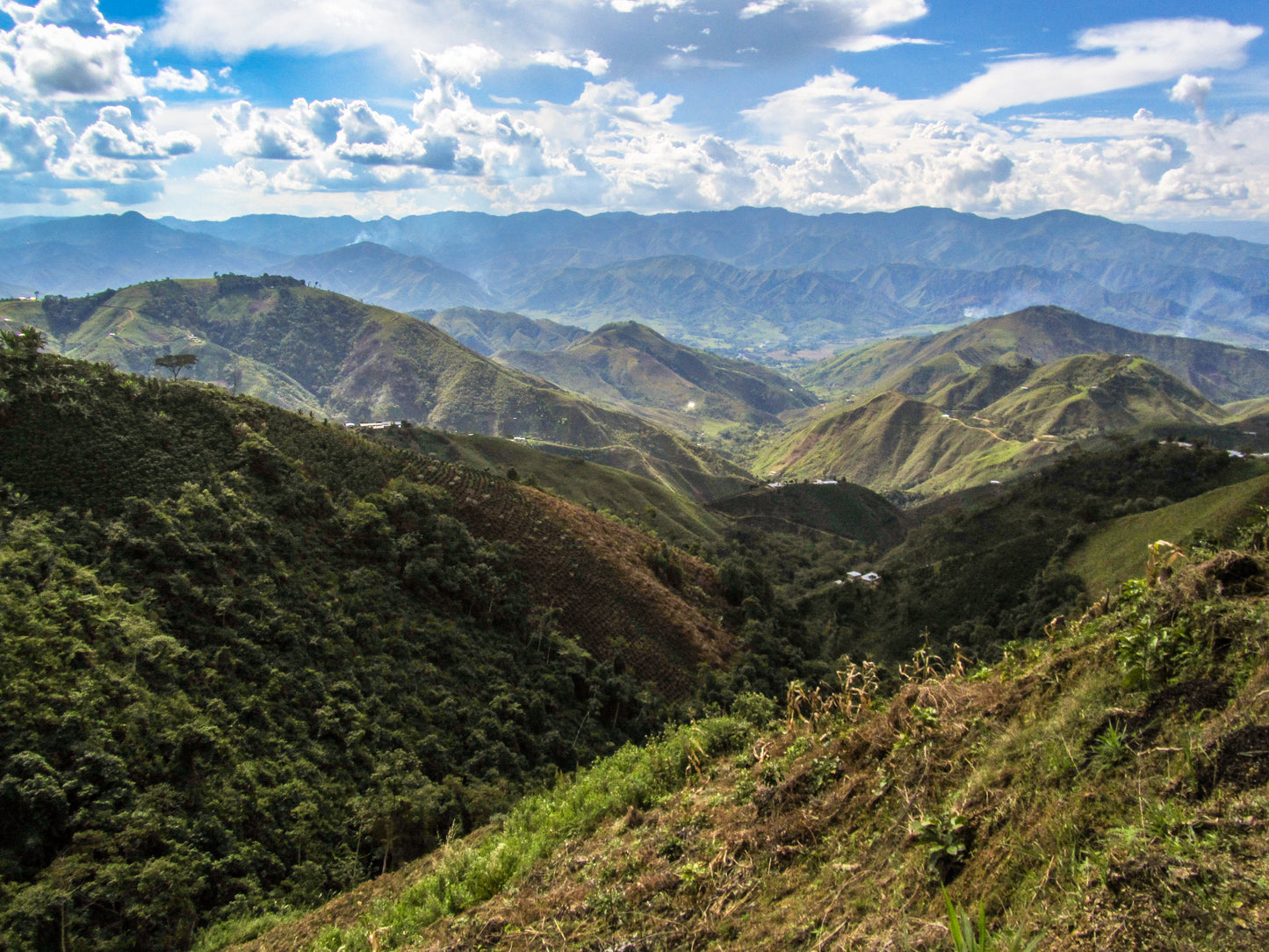

Colombia
In Colombia, the massive Andes mountain chain marches up from Ecuador, just above the equator, into the southwestern Colombian state of Nariño. It tumbles into the contiguous states of Cauca and Huila where it quickly branches into three ranges: the Occidental, the Central and the Oriental Cordilleras, enfolding two valleys whose rivers, the Cauca and the Magdalena, descend ever northwards for hundreds of miles to conjoin and disgorge into the Atlantic Ocean, while the sole remaining Oriental range finally comes to rest in Venezuela.

Dense clouds form from the Pacific releasing heavy rainfall on the west-facing slopes of the Cordillera Occidental. They glide over the Cauca valley, and are squeezed again as they ascend the Central Cordillera. The process happens a third time with the Cordillera Oriental where Pacific moisture mixes with moist streams from the Amazon.
Coffee grows on all three ranges throughout Colombia, ranging in altitude from 4,000 to over 6,000 feet and with a hefty yearly rainfall averaging 80 inches or more. Colombia’s proximity to the equator results in two coffee harvest seasons per year a main one, in which the best qualities are produced, and a minor one, referred to as the “mitaca.” The main harvest occurs April to July for some regions and during September to December in others.
Just about all of Colombia’s coffee is sold by grade (size beans and number of defects) and, for more upscale markets, by region. Thus George Howell's Coffee Connection (1975 – 1994) used to sell Colombian Supremo (large size beans with the fewest defects) from Nariño. Quality pioneers such as George Howell Coffee have now taken the search for quality a crucial step further.

For over one hundred years Colombia has been one of the world’s largest producers of coffee, often ranking second and providing approximately 10% of the world’ supply, all higher quality Arabica. Colombian coffees are generally lively, mild, yet distinctly flavored with notes of honey, tropical fruits and molasses.
The northern coffee regions such as Antioquia, Bucaramanga and Medellin are today dominated by large relatively efficient farms producing very good commercial qualities, while more Southern states, such as Huila, Cauca, Tolima and Nariño, are composed nearly entirely of very small farmers.

Most small farmers have well under 10 acres of land, many only 2 or 3 acres. Each farm, no matter how small, produces finished green coffee ready to be sorted and exported. Their outputs, for obvious economic reasons, have always been lumped together to produce large easily exportable lots. There has been no incentive to produce more than what is acceptable. This has led to generally good commercial qualities lacking standouts.
George Howell Coffee now drills down to the individual farmer level, meeting with them individually and in groups, cupping micro-lots consisting of as little as 100 lbs, and selecting the very best for which it pays prices to the farmers at far higher rates than Fair Trade and on a rising scale based strictly on quality. We are finding certain farmers who are naturally inclined craftsmen are also naturally committed towards ecological farming.
It really is in the cup!






